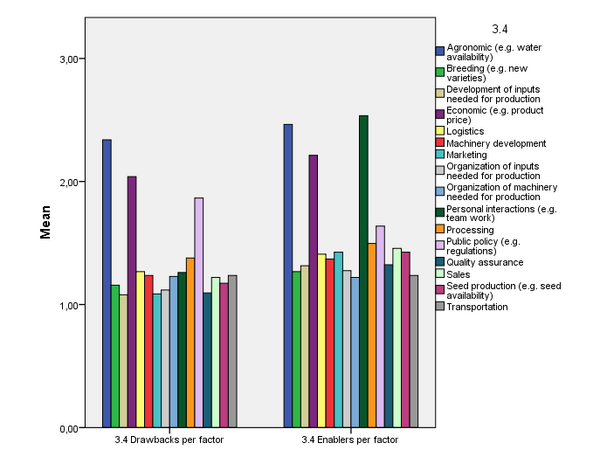As a first step toward realising the benefits of crop diversification, DiverIMPACTS explores the existing crop diversification experiences across Europe. An online survey was conducted for experts and professionals reporting on specific crop diversification experiences. The survey focused on characterising the diverse initiatives, identifying factors that contributed towards success or failure (see figure 1) and on describing the dynamics of the initiative over time. We received 129 valid responses from 15 European countries – the project countries Belgium, France, Germany, Hungary, Italy, the Netherlands, Poland, Romania, Sweden, Switzerland, and UK, as well as Denmark, Finland, Luxemburg and Spain.
The survey was conducted in the online survey tool LimeSurvey, from which the data was exported into Excel and SPSS. The starting point for most diversification initiatives was an existing crop rotation, but on some fields multicropping or intercropping was already implemented (ca.15% of responses). Only a smaller share of the initiatives reported that no type of diversification had occurred before the reported initiative (typically maize monoculture or pasture). The diversification initiatives most frequently consisted of including new crops to the rotation cycle, but the number of multicropping and intercropping cultivation systems also doubled. In several cases, different forms of diversification – rotation, multicropping and intercropping – were combined in one cultivation system. A wide variety of crops were introduced. The most common crops were cover crops, protein crops, cereals, root crops and vegetables, but fibre crops, such as hemp, were also introduced. Most initiatives were arable cropping systems and about one third were vegetable cropping systems. The share of initiatives on non-organic and on certified organic land was almost even.
Two thirds of the reported diversification initiatives were evaluated as successful or very successful overall. The three most frequently mentioned targeted outcomes were improved environmental preservation, improved crop production stability and higher income. For a large majority of initiatives, all three of these were deemed to be achieved. While the most important success factors were based on human resources (e.g. professional expertise, commitment of actors or personal interactions), the most important barriers were economic and agronomic factors (e.g. market conditions, amount of financial resources or climate issues). A specific challenge for intercropping systems reported in open questions was harvesting and processing of mixed crops.
The survey provides a first indication about which aspects and factors should be paid special attention when planning future diversification initiatives.

 tap and then scroll down to the Add to Home Screen command.
tap and then scroll down to the Add to Home Screen command.